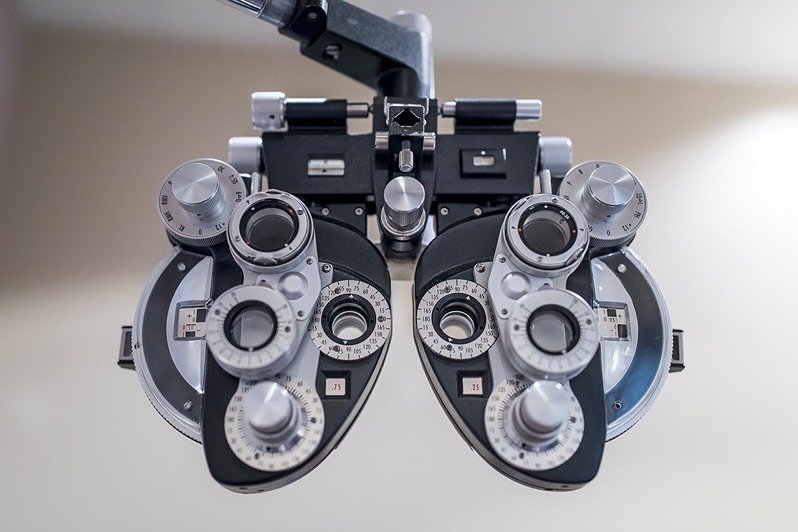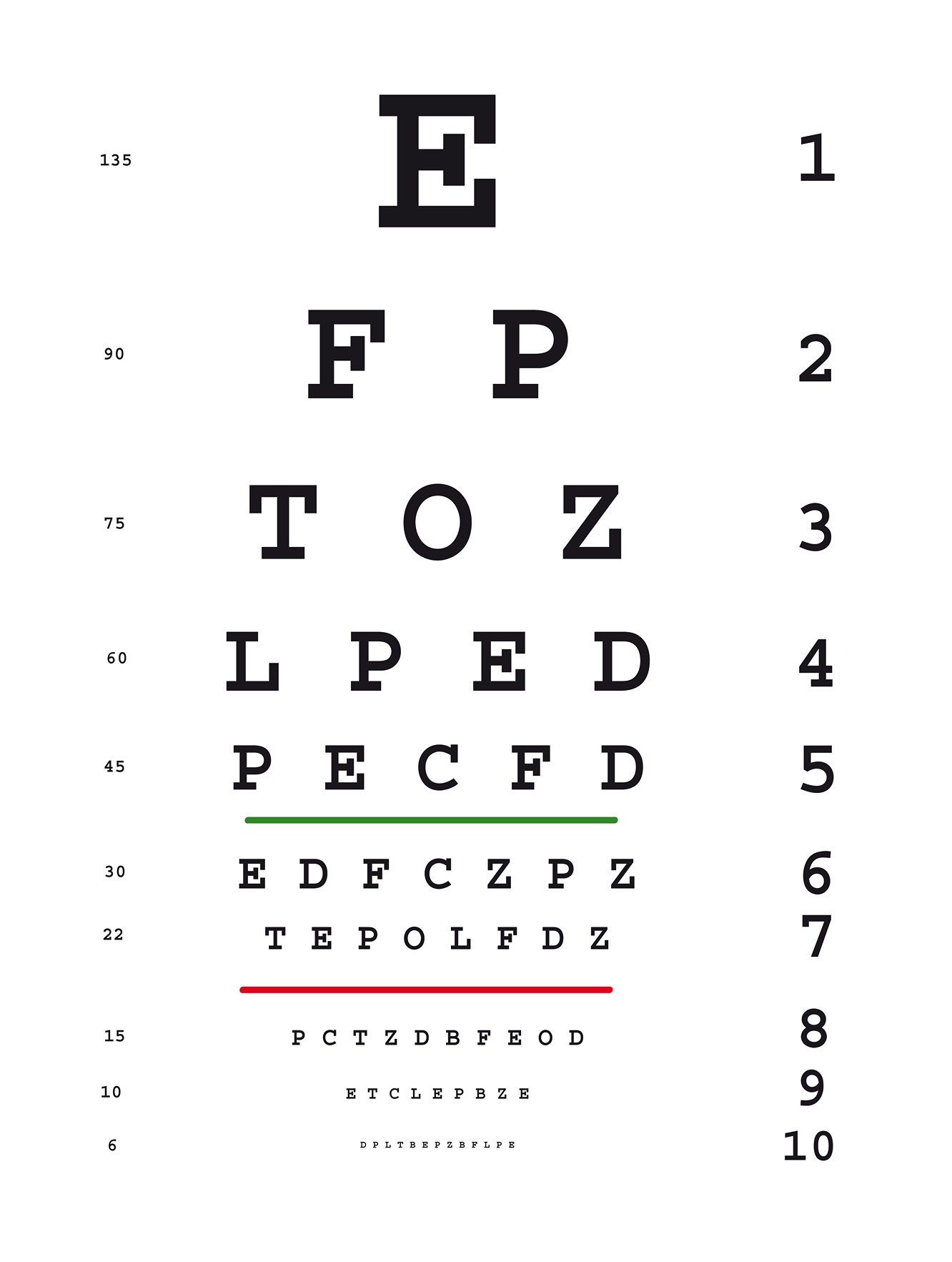A guide to 20/20 Vision Meaning
Most people believe 20/20 vision is the best acuity score you could get on a vision screening…but is that true? In reality, a score of 20/20 is like just passing a test with a B+ or an A-; so very good but you could see better. 20/20 vision means you are able to clearly see letters that everyone with healthy vision should be able to see at a distance of 20 feet. So, while your distance vision is healthy with a score of 20/20, optometrists still need to scan for many other potential visual issues.
Below, we’ll explore the complexities of visual acuity and explain what you should look for in your score. This article will also explore a few exciting ways you could potentially improve your visual acuity over time.
What Exactly Is Visual Acuity?

Before we take a closer look at what 20/20 vision means, we have to carefully define the term visual acuity. Unfortunately, it’s very easy for people to get visual acuity mixed up with terms like vision and eyesight, both of which have more generic meanings in optometry. Always remember that these 20/-- scores are related to visual acuity when reading through this piece.
Simply put, visual acuity refers to how well you can see static symbols at a distance. This is why doctors use a stationary eye chart to gauge visual acuity. To help explain this concept to patients, sometimes your optometrists might use the term “visual sharpness.”
Biologically, visual acuity is a function of your eyes’ ability to convert light received through your lenses into visual data. After passing through the corneas and lenses, light waves are transformed by the retina into neural signals for the brain to interpret.
An area of great importance for visual acuity is the macula. This thin strip of tissue is located in the centre of the retina and has an extremely high number of cone photoreceptors. Unlike rod photoreceptors, cones are associated with focused attention during the daytime. Because of the macula’s high concentration of cones, it’s especially important for healthy visual acuity.
Is Visual Acuity The Same As Vision?
Visual acuity forms part of your vision.
These two terms are often confused, but they are not directly interchangeable. Optometrists argue visual acuity should be seen as one aspect of a person’s overall “vision.” Visual acuity refers to your clarity of vision, whereas the term “vision” includes many other aspects of sight including colour vision, contrast, and peripheral vision, just to name a few.
Bear this distinction in mind when you get your “vision score.” Indeed, it might be helpful to add the word “acuity” to your score to remind yourself this test is only a measurement of one aspect of your vision.
20/20 Vision
Now we have more understanding of visual acuity, let’s try to gain a better understanding of 20/20 vision.
As noted above, 20/20 vision is a visual acuity measurement that tells an optometrist how clearly you can see letters at a distance of about 20 feet. This particular level is considered the norm in the eye care field and it means you have good distance vision.
The lines of letters arranged on an average Snellen Eye Chart start with a score of 20/200 and work down to 20/10. If anyone is only able to read the top letter and so receives a score of 20/200, then that means they need to be closer than 20 feet to see something a healthy person should be able to see 200 feet away. Anyone with a score like this would be considered to have a very poor level of vision.
On the flip side, there are a few lines of letters underneath the 20/20 line that signals above average visual acuity. A person with a score such as 20/10, for instance, is able to clearly see a letter 20 feet away that most others can’t see unless they are 10 feet away. Similarly, a person with 20/15 vision, can see a line in the eye chart at 20 feet that the average person can only see when they are 15 feet away.
A Few Things Visual Acuity Tests Can’t Tell You
It’s important to remember that these visual acuity numbers are only one aspect of overall vision health. These tests can’t, of course, gauge how well you are able to read texts held close to your face. Indeed, there are many farsighted and presbyopia patients who have perfectly healthy visual acuity scores.
Also, since the letters on a standard eye chart are black on a white background, these visual acuity tests don’t tell optometrists much about how well they’re able to perceive contrasts between similar colours. To check colour vision, for instance, doctors have to use special charts developed by Japanese ophthalmologist Shinobu Ishihara.
Yet another aspect of vision that visual acuity tests can’t test is your peripheral vision. To check a patient’s peripheral vision, most optometrists use a computerised “visual field test.” For this test, patients usually have to look straight into a machine and click a button every time they see a light flashing around the periphery.
Snellen Or LogMAR: What’s The Best Chart?

Today, there are two major eye charts used to measure visual acuity: Snellen and Logarithm of the Minimum Angle of Resolution (aka LogMAR). Although they may look similar to the layman, there are a few crucial features that differentiate these two charts.
The more traditional of these two charts is the Snellen, which is named after its inventor Dutch ophthalmologist Herman Snellen. First created in the 1860s, this chart measures a patient’s visual acuity from 20 feet away from 20/200 to 20/10. Every Snellen Chart starts with one large letter (usually an E) and gradually increases the number of letters per line up to nine.
By contrast, the more recent LogMAR charts always have four letters per line from the top to the bottom. All of these letters have been evenly spaced to proportion, which optometrists believe leads to more accurate readings. Scientists behind the LogMAR chart also decided to use Sloan font rather than the Courier Standard Bold found in the Snellen Chart.
Created in the 1970s by a team at the National Vision Research Institute of Australia, the LogMAR chart was specifically developed to help scan the vision of patients with diabetic retinopathy. For this reason, you might see LogMAR charts listed as Early Treatment Diabetic Retinopathy Study (ETDRS) charts. Instead of using the 20/20 standard, LogMAR charts measure a person’s eyes using log units that range from 1.00 (20/200) to -0.30 (20/10).
Most current studies suggest LogMAR charts give doctors a more accurate reading of visual acuity than Snellen charts. This is especially true with patients who suffer from conditions like age-related macular degeneration or diabetic retinopathy. As more researchers look into the advantages of LogMAR screenings, it’s likely that LogMAR will become the new norm in global eye care clinics.
Can We Improve Visual Acuity?
It’s true that our vision is largely the result of our genetics—however, recent technological breakthroughs might allow us to improve our visual acuity at home. Amazingly, web developers are now working on brain training apps specifically designed to strengthen the visual cortex.
One of the most hyped of these “vision strengthening” apps goes by the name UltimEyes. Created by researchers at the University of California, Riverside, this app instructs users to move their eyes in specific patterns for a 25-minute “workout.” As strange as it sounds, there is a bit of science to back up the UltimEyes app.
To test out this app’s efficacy, scientists gathered a group of UC baseball players and split them into two groups. The first group had to use the UltimEyes app 30 times while the other group didn’t use the app. After a few weeks, the players who practiced with UltimEyes had improved visual acuity scores and a stronger baseball performance compared with other study participants.
Of course, apps like UltimEyes are still in their beginning phases, but these results are encouraging. People who want to learn more about this UC study can check out the full article by clicking on this link.
A Staple Of Every Vision Screening: Visual Acuity Tests
There’s no doubt that visual acuity is an important aspect of vision health. It’s equally important to be aware that visual acuity isn’t the central focus of an eye exam. During your eye exam, your optometrist will examine many aspects of your visual health using a wide variety of tests. The NHS recommends people without pre-existing eye conditions get at least one eye exam every two years. To learn more about finding an optometrist in the UK, check out the NHS website.
Author: John Dreyer Optometrist Bsc(Hons), MCOPTOM, DipCLP
Created: 5 May 2023, Last modified: 7 Jan 2025

